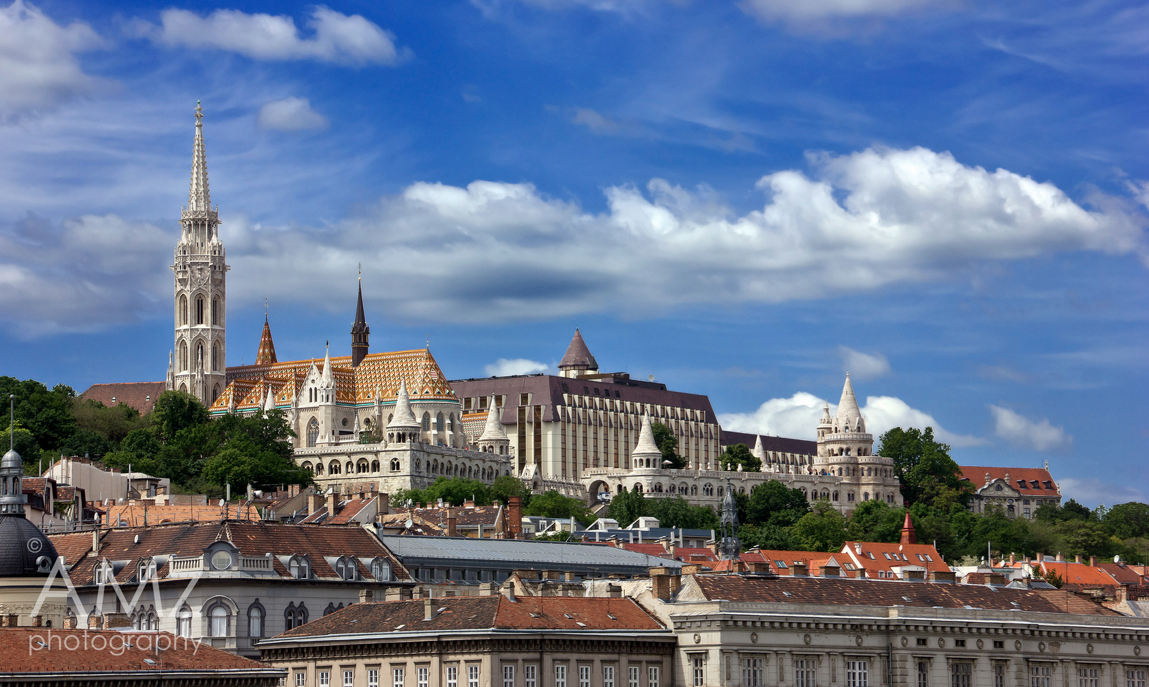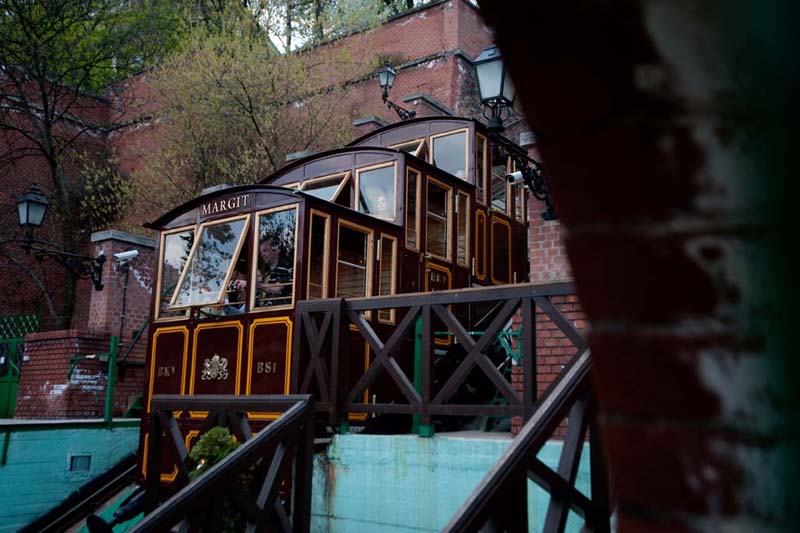1/7
Transportation
The easiest and fastest means of transport taking you to the First District is, without a doubt, Metro line 2 (M2). Get off at Batthyány tér (Batthyány Square), take a look around the Market Hall’s shops, then trot up the stairs leading to Buda Castle. You can also hop off at Széll Kálmán tér (Széll Kálmán Square), where three bus lines (16, 16A, and 116) climb the picturesque hills, so you don’t have to break a sweat. If you’d like to reach the vicinity of Gellért-hegy (Gellért Hill), take bus 27 from Móricz Zsigmond körtér (Móricz Zsigmond Square). For a well-rounded trip around the First District starting in , take a ride on bus 178. To put the icing on a cake with an unconventional mode of transport, you can get to Buda Castle from Clark Ádám tér (Clark Ádám Square) by buying a ticket for the Budavári Sikló ().
2/7
fisher
The seven towers of Halászbástya (The Fisherman’s Bastion) represent the seven Hungarian tribes who set foot in the Carpathian Basin in 896, and also provide a great cityscape view. Nearby Mátyás-templom (Matthias Church) is a richly ornamented, thousand-year-old wonder of gothic architecture.
3/7
Getaway snugs
To release your inner child, and to get away from the hustle and bustle, find your way to the swings hidden in the tiny park next to Bécsi Kapu (The Gate of Vienna). Taking a seat atop the Chain Bridge Tunnel is also advisable; it is a splendid spot to gaze at the illuminated cityscape. Tóth Árpád Promenade, swirling along the south-western side of Buda Castle, opens a panorama on the hills of Buda, and is quite popular among romantic strollers and lonely photographers.
4/7
Arts and culture
The Hospital in the Rock Museum has nothing to do with a collection of rehabbing rock stars. It is a labyrinth of interconnected caves and cellars beneath Buda Castle that used to house a hospital and a nuclear bunker during WW II. You can purchase creepy souvenirs at the gift shop such as gas masks and military stretchers.
The houses the largest collection of Hungarian fine arts, and is one of the most iconic buildings of Budapest, while the showcases the city’s battered history.
The Garden of Philosophy, located in the vicinity of Gellért Hill, is a monument consisting of eight sculptures divided into two groups. The first group of iconic philosophers - forming a circle around a fountain – symbolizes the countless cultures of our planet, while the second group emphasizes the significance of spiritual development.
5/7
Nightlife
Cheap pubs such as Bástya Borozó and Hattyú Kávézó - with the latter being open 24/7 - offer an authentic Hungarian pub atmosphere, novel-worthy regulars, and several drinks to warm up your all-nighter. During the summer months, Jégkert, a spacious garden bar suited for hanging out with pals, is always crowded with Buda side teens and twentysomethings. Moszkva Tér Bisztró, situated in Széll Kálmán tér (formerly known as Moszkva tér), is a youthful spot where you can get involved in countless fossball games.
6/7
Healthy options
was built during the Ottoman rule of Hungary. This state-of-the-art complex has been operating since the 16th century, and offers an eye-pleasing scene for swimming and chilling. Due to an old tradition, there are separate days for men and women during the weekdays. Weekends are open for both genders, and are saved for night-time bathing.
7/7
Best accommodations
Multi-award winning , named after mesmerizing Lánchíd (Chain Bridge), is also an intersection of past and present providing a unique atmosphere, 45 differently designed rooms, a restaurant, a bar, and jacuzzi-equipped panorama suites. Housed by a merchant’s former residence, is a one-of-a-kind mixture of innovation and tradition. The former attribute is summoned by the contemporary vibe, and the latter by the historic location.










